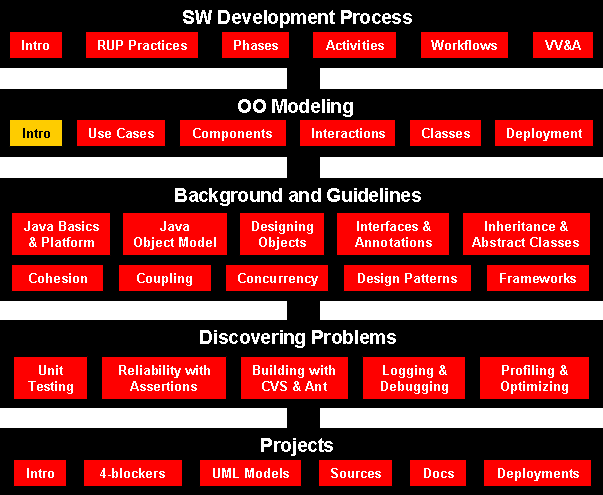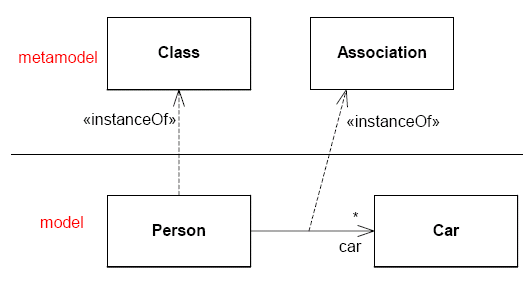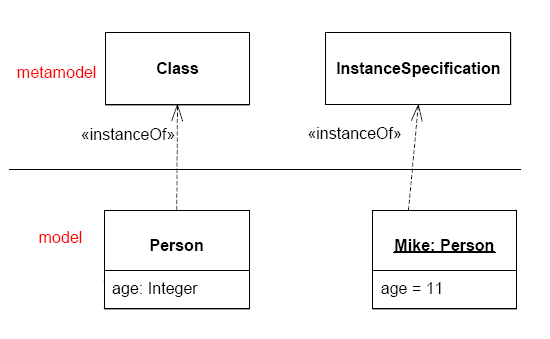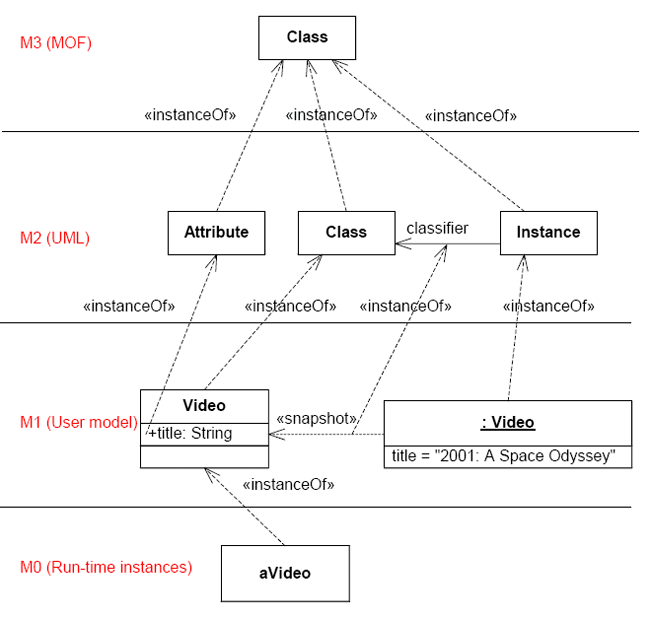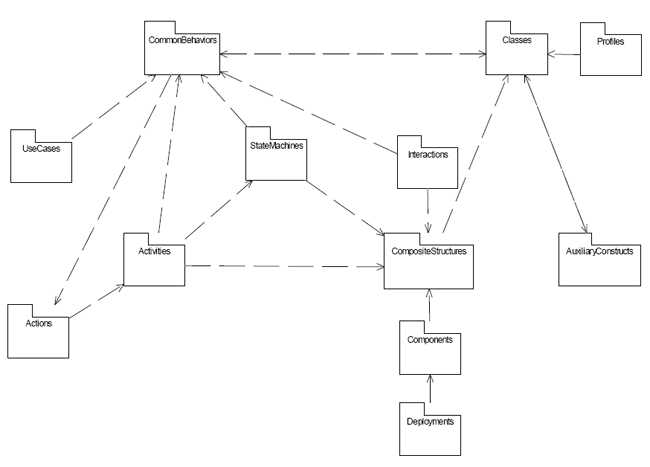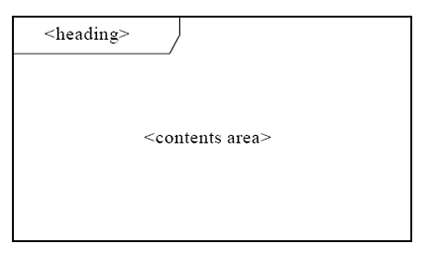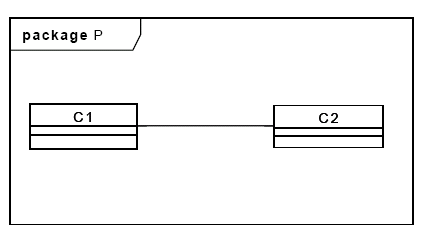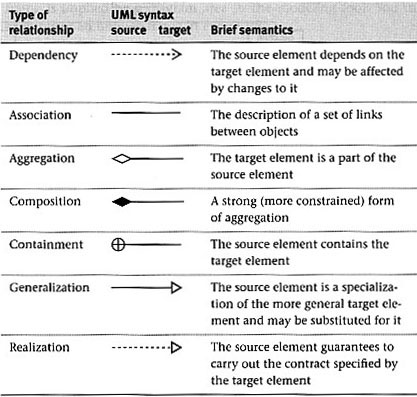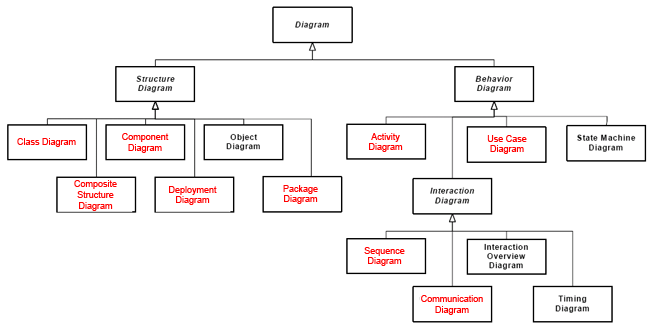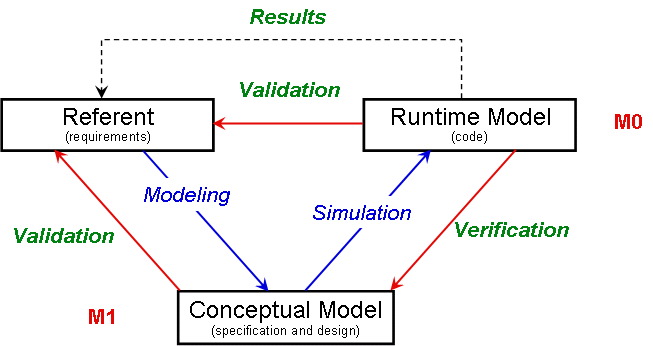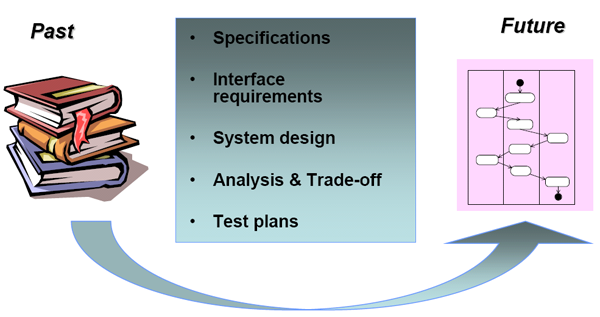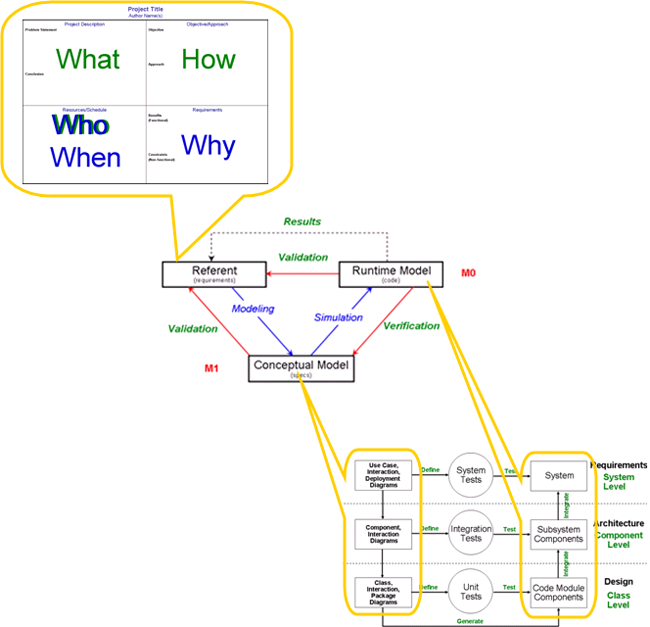Infrastructure
-
The infrastructure doesn't focus on the UML itself; instead it describes the way in which the UML is described, and the way that description is structured into packages
and profiles. For example, the most basic elements of modeling are
represented core UML and additional layers and profiles tailor existing
metamodels toward specific platforms, such as C++, Java, CORBA, or EJB, or
domains such as real-time, business objects, or SW process modeling. This layering helps organize the UML,
and it helps incremental learning as well.
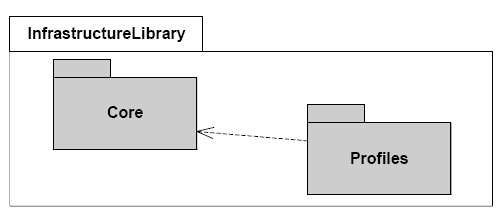
- A CASE tool can store the information gleaned from its diagrams in a nice sensible schema (logical database structure). What kinds of elements (what tables?) would the database need? That's what the infrastructure tries to tell you, the tool builder, as formally as possible.
-
The infrastructure tries to ensure that the way the UML is described -
the metamodel - is itself compatible with other modeling language
descriptions.
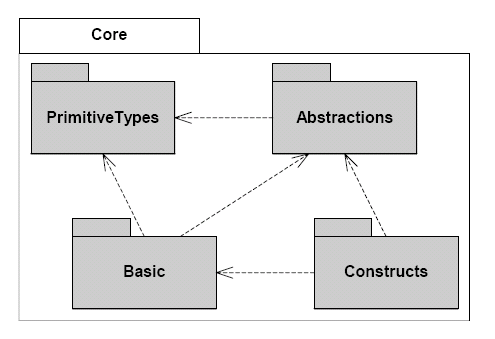
The Core packages
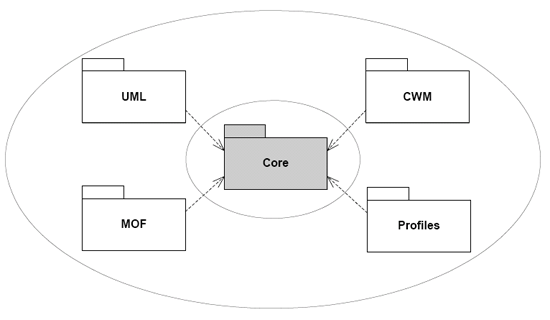
The role of the common Core
-
The OMG has other metamodel called the Meta-Object Facility (MOF) - the
metamodel of the UML. The languages in which languages are expressed are
often called metalanguages. The infrastructure of the UML has metamodels
of metamodels. A common and helpful picture is the "M n " picture of the
layering. Look at Modeling layers (metamodels and meta-metamodels).
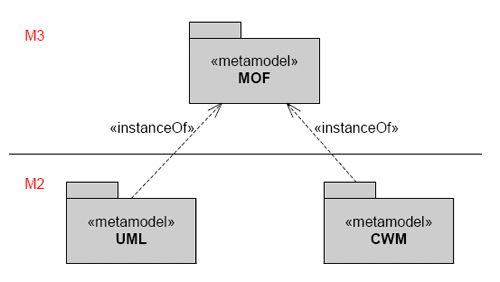
- All of the UML metamodel is instantiated from meta-metaclasses that are defined in the InfrastructureLibrary.
- The UML metamodel imports and specializes all metaclasses in the InfrastructureLibrary.
-
You do not need to learn the infrastructure - only UML models relevant
to your projects, unless you want to be involved in the OMG UML
standardization process.
